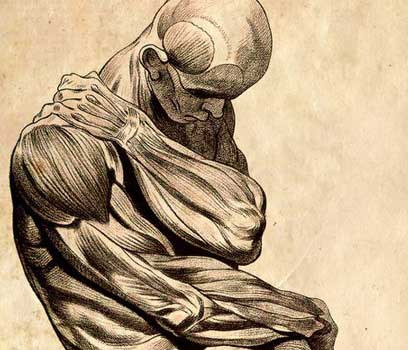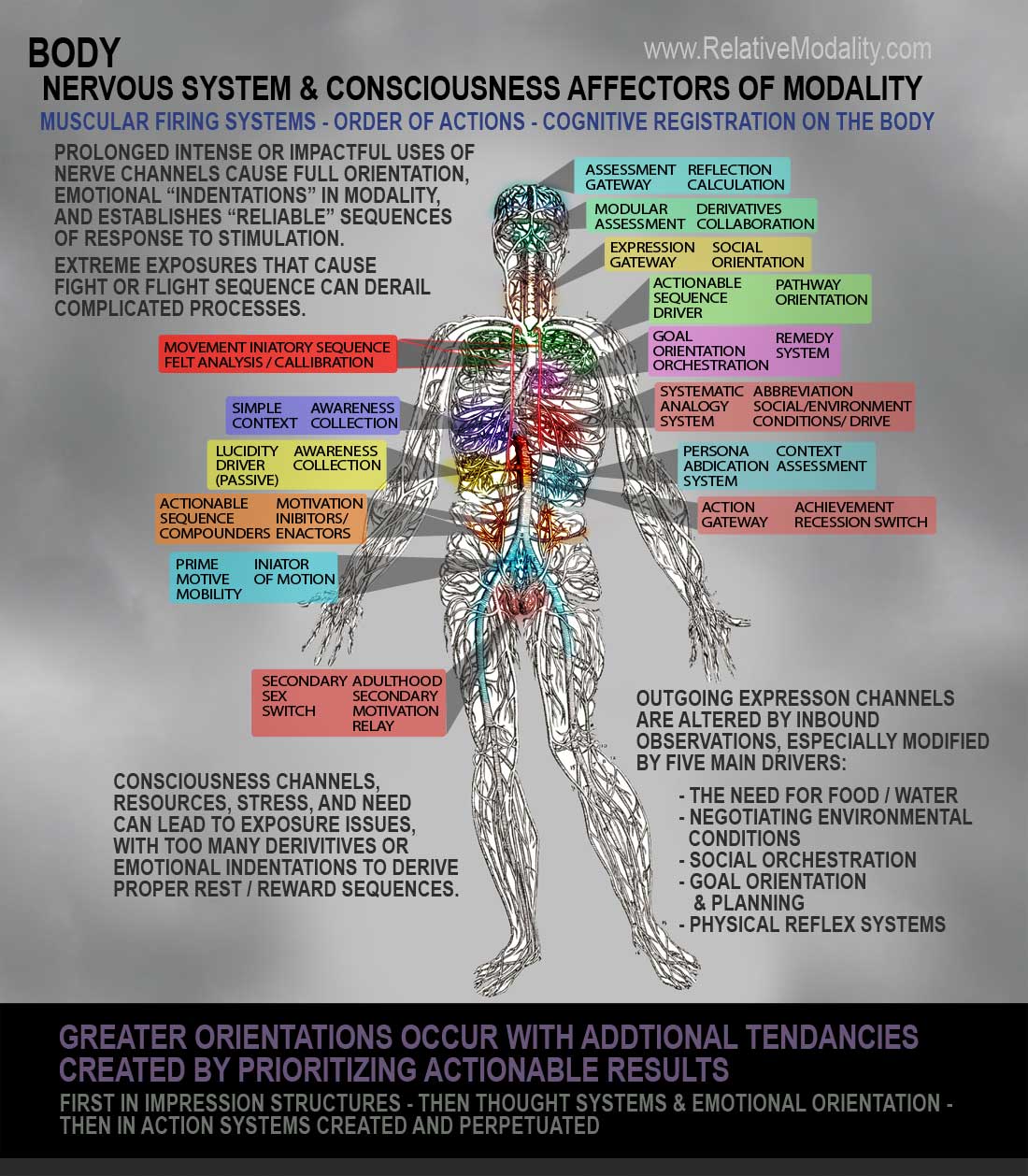RELATIVE MODALITY
MODALS OF CONSCIOUSNESS

NERVOUS SYSTEM
The human nervous system has manifest over eons of natural development. Each added layer of complexity in brain tissue synapses has allowed more complex thought processes. This translates to more overlapping considerations. Animal predecessors to human beings all share the innate nervous firing processes for survival. Added layers of complexity have allowed greater considerations that extend to social structures and ideological structures that can actually change what we feel, think, do, and say at any given time.
In times of great stress, "indentations" or nervous wear can lead to prolong times of recovery.
In these periods, much sensation can be felt, and the tiredness can reveal sluggishness of activity that can more easily reveal where felt locations of sensitivity actually drive human beings into action, calibration of thought, emotional repetition, stress tolls, and a sense of the overall system.
Interestingly, these orders of operation can be felt in normal conditions as well, and many if not most of our emotions have physical registry points all over the human body, that motivate action and lead to changes in behavior even.
ENERGY IN EXHIBITION
MOTIVATIONAL DRIVER & CHANGE STATES

Redundant Pathways & Simultaneous Considerations:
The more redundantly we use certain pathways of nervous action, the more we can feel how our emotions are written upon our body - but more than that - how our body has manifest a nervous system to enable and reward certain behaviors more than others.
Caution, hesitation or absolute forward motivation are two prime examples - and they can be felt most in situations that entail the Fight or Flight sequence, when adrenaline and cortisol pummels the body into advanced modes of action.
However, the subtle nuances to human emotion bear a similar registration system, however it's more complex - tendrils of thinking can bring about emotional changes, and can rewrite the way the body feels.
This is what makes human beings unique to modern predecessors - we harbor more layers of simultaneous activity and more control in the writing and re-writing of our cognitive emotional system.
Yet, our body was designed first for motion, second for reflexology to the environment around us, then further for elaboration of awareness of finer details to the environment, followed by more advanced planning sequences accompanied by not just memory, but the ability to project memory into an 'unreal' mental realm temporarily to interchange facets of what we see, feel, and know.
However, our emotions bear a prime motivation to initiate action based on organ feedback - and these system rely on communications to establish desire triggers, such as the collection of food and water, defense mechanisms, orchestrate social orientations, and contend with the pulls of the sex drive.
Who we are begins to be a collection of probabilities and preferences - as our unique brains and nervous systems fire to create behavioral patterns of pleasure and discomfort. It is essential to have a general concept of how the body initiates action and how this motivates behavior.
As the image below shows, there are sensational processes that affect what we do, how we feel, and thus, who we are.
The seat of action lay much around the organs of the torso - and even more so through the musculature of the chest and abdomen. The reason for this is simple: when we move into action, the most primary muscular sequence of consideration is the firmament of the spine, and the flexation of the abdominal and core muscles - followed by, or simultaneously stimulated, the induction of the limbs via the chest pectoral muscles, and the interior muscles of the upper thighs.
For this reason, much of what we feel is dual system of the muscular firing system, and then the primary organ system that initiates motivational drive such as action, hunger, will formation, cognitive processes. The human being carries these two processes simultaneously, but they are different, and so sometimes we can toggle between them more so than other times, such as relying on muscular systems for intense physical activity - or cognitive process and emotional centers for reflective thinking.